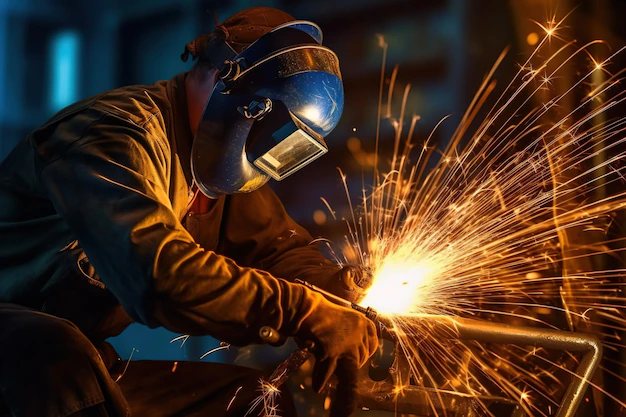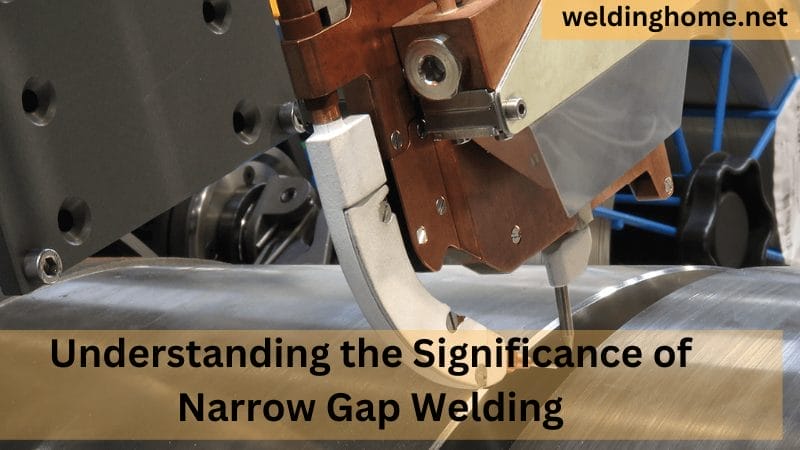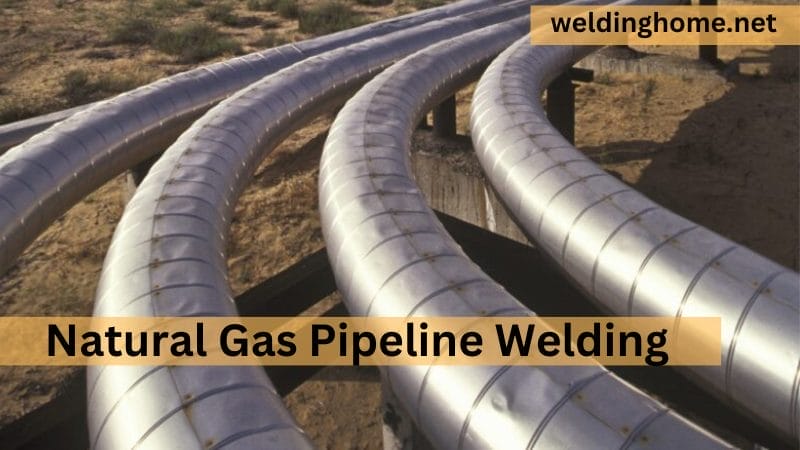How Undercutting Affects The Quality of the Weld: Solutions and Techniques

Introduction
Welding is essential for many things we need, from big buildings to complicated tools. Welders have to deal with a hidden enemy called “undercutting.” Undercutting can damage buildings and wear away at welds invisibly.
This post will explain undercutting and how it affects weld quality. Explaining undercutting and how it enters welds is the first step. I’ll next discuss How Undercutting Affects the Quality of the Weld.
Still, there’s good news. I’ll also teach you how undercutting affects the quality of the weld: solutions and techniques. After this voyage, you’ll learn to make substantial, safe, high-quality welds. Start with welding and learn how to overcome undercutting.
What is Undercutting in Welding?

Undercutting, a groove or depression on the base metal edges near the weld bead, is a frequent welding problem. It shows as a hollow region that may damage weld quality and structure.
A groove or cutaway results when welding fails to fuse base metal edges. Due to its weakness, this flaw renders the weld more prone to stress, fractures, and corrosion.
Undercutting may result from inappropriate welding procedures, electrode selection, and welding conditions. Identifying and resolving undercutting sources is essential for weld strength and dependability in construction and industry. Prevention and correction of welding undercutting need proper training, technique, and quality control.
Methods for Evaluating Undercut in Welds
According to the AWS D1.1 Code, any undercut deeper than 1/16” is unacceptable in welding. Welders that don’t follow these standards may safely use undercuts under 0.5 mm (0.02 in.).
Inspectors use a 1/16″–1/32″ range to measure undercuts. An inspector checks the cumulative undercut length in a 12-inch segment. Welds fail inspection if undercuts exceed 2 inches.
What determines weld undercut acceptability?

There are two main ways to decide.
The informal method visually evaluates joint type, material strength, and thickness. Try running a fingernail over the undercut—if it catches, it’s too deep.
The formal method follows AWS rules. These standards say any undercut under 1/32″ is innocuous within length limitations. V-WAC single weld and bridge cam gage are dependable undercut depth measuring equipment. A thorough evaluation verifies welding meets quality and safety requirements.
Causes of Undercutting
A common problem in welding is undercutting, which can hurt the joint quality. There are many reasons why it happens, some of which are:
Bad Welding methods:

Undercutting can happen when welding methods are bad, like using too much heat or the wrong journey speed. To escape this problem, welders must keep the arc length, electrode angle, and movement speed all the same.
Not Choosing the Right Electrode:
Undercutting can happen if you don’t choose the right electrode for the job. To complete a job successfully, it is essential to choose the right wire.
Changes in Welding Parameters
Changes in welding parameters, such as voltage, current, and gas flow, can lead to uneven welding, which can cause undercutting. Welding tools must be adequately calibrated and watched to stop this from happening.
Thickness of the Material:
Undercutting is more likely to happen with thicker materials, especially when welding at higher speeds. This problem can be avoided by changing the welding settings and methods to work with thicker materials.
Prepare the joint:
Undercutting can happen if the joint needs to be adequately prepared, like if the sides aren’t rounded or the joint needs to be set up straight. Preparing the joint correctly is crucial, ensuring it meets the welding standards.
Understanding these reasons for undercutting is essential for welders because it lets them stop it before it happens and keeps the quality and integrity of their welds.
How Undercutting Affects the Quality of the Weld

Undercutting has far-reaching effects, including a negative impact on the quality of the weld, which may be shown in the following ways:
- Undercut Welds suffer from a reduction in strength because they do not possess the appropriate strength, which leaves them susceptible to structural failures.
- Undercuts provide increased stress concentrations, which may eventually lead to cracks and fractures in the material they are cut into.
- Susceptibility to Corrosion: Areas undercut are more likely to corrode, reducing the weld’s endurance.
Techniques to Prevent Undercutting
- Undercutting in welding is difficult, but there are ways to overcome it. Some ways to avoid undercutting and retain weld quality:
- Maintaining a steady travel speed, electrode angles, and arc duration are important welding strategies. Undercutting may be avoided with proper technique.
- Choose the right electrode for welding. Electrodes with low hydrogen concentration prevent undercutting and are preferable.
- Keep welding parameters like voltage, current, and gas flow constant. To avoid undercutting, check and calibrate welding equipment regularly.
- Adequate joint preparation is essential. Undercutting may be reduced by beveled edges, joint designs, and clean base materials.
- Thicker materials need different welding methods. Adjusting to material thickness is crucial since thicker materials undercut more easily.
- Conduct welding and post-welding inspections. Early detection of undercutting permits quick correction.
- Make sure welders are adequately trained. Learning welding procedures may greatly prevent undercutting.
These methods help welders avoid undercutting and create stronger, more dependable welds that fulfill industry standards and safety norms.
Solutions for Repairing Undercut Welds
Welders must be able to repair undercut welds, which may compromise their structural integrity. Preventing undercutting is best, but there are viable solutions. Here are several practical ways to fix undercut welds, focusing on How undercutting affects the quality of the weld: Solutions and techniques
1. Fill the Groove:
Weld metal is often used to fill the undercut groove. The undercut region is methodically welded to return the material to the base metal level.
2. Use Proper Welding Techniques:
Correcting undercut requires proper welding. For proper fusion, travel speed, electrode angle, and arc length must be maintained.
3. Grinding and Blending:
The welded area becomes smooth and homogeneous after filling the undercut, grinding, and blending. Besides repairing the weld’s look, this also ensures its structural integrity.
4. Consider Post-Weld Heat Treatment:
Post-weld heat treatment may reduce residual strains and strengthen the repaired area. This is important for crucial weld integrity applications.
5. Use Ultrasonic Testing:
Ultrasonic testing is a non-destructive way to evaluate repaired welds. It verifies the weld meets requirements and is structurally sound.
6. Practice Quality Assurance:
Repairing undercut welds requires careful inspections and documentation. These methods ensure restored weld integrity.
Remember that undercut repair depends on the welder’s expertise and the undercut’s severity. Re-welding the joint may be cheaper in essential applications with significant flaws or welds.
Welders fixing undercut welds must always have the training and expertise to guarantee the repaired weld fulfills safety and quality requirements and maintains its quality.
Conclusion
As we conclude our discussion on how undercutting affects the quality of the weld? Solutions and techniques. This welding flaw is a significant issue that must not be ignored. Knowing how undercutting affects the quality of a weld makes it even more important to avoid it and fix it as soon as possible.
We’ve examined many techniques, from the right way to weld and choose the right electrode to heat treatment after the weld and ultrasound testing. All of these are valuable ways to lessen the effects of undercutting.
It’s impossible to overstate how vital quality assurance practices are for keeping weld integrity and ensuring that fixed welds meet strict safety and quality standards.
Welders must first understand how necessary their skills and knowledge are for dealing with cheating successfully. Welds stay solid and reliable if this flaw can be prevented and fixed. This upholds the highest standards of weld quality.
FAQs
What is undercutting in welding?
Undercutting is a welding defect where a groove or depression forms along the base metal’s edges near the weld bead. It can compromise the structural integrity of the weld.
Can undercut welds be repaired?
Undercut welds can be repaired by filling the groove with additional weld metal using proper techniques. However, prevention is always preferable to repair.
How does electrode selection affect undercutting?
Choosing the right electrode for the specific welding application is crucial. Electrodes with low hydrogen content are recommended to minimize undercut.
Are there industry standards for preventing undercutting?
Various industry standards and guidelines exist to prevent and address undercutting in welding. Following these standards is essential for quality control.
What should I do if I find undercutting in my welds?
If you discover undercutting in your welds, it is advisable to consult with an experienced welder or supervisor to determine the best course of action for repair or prevention.






